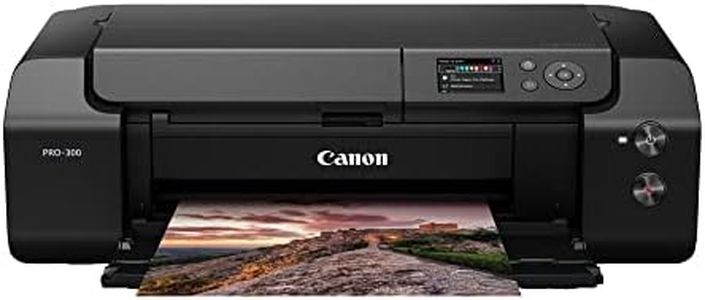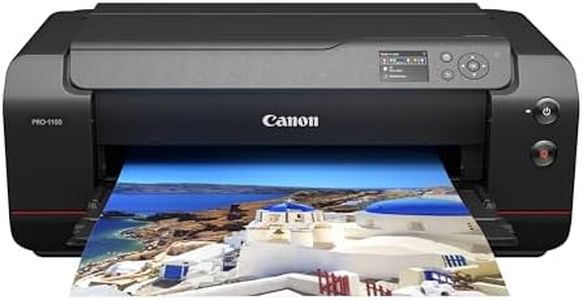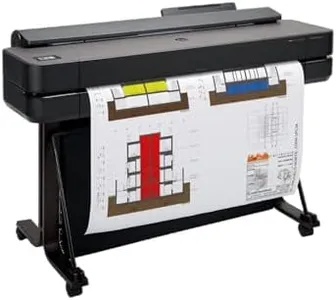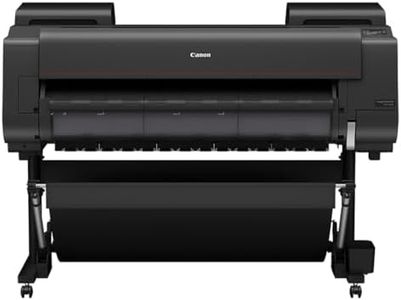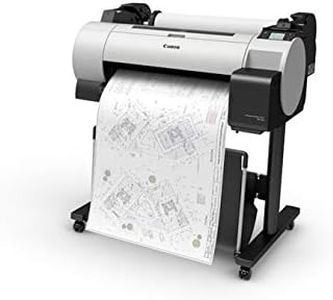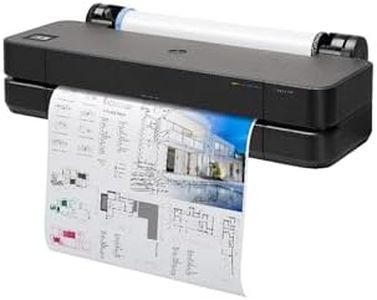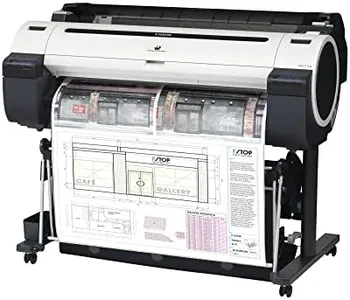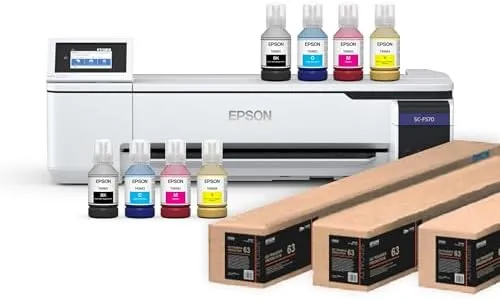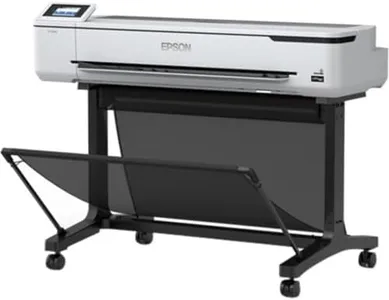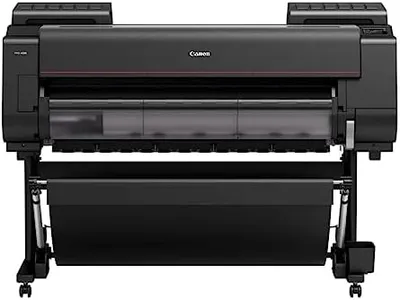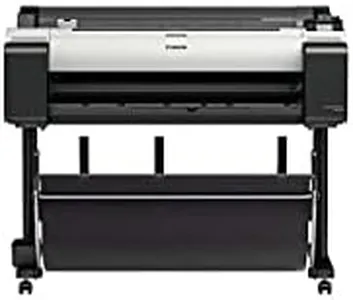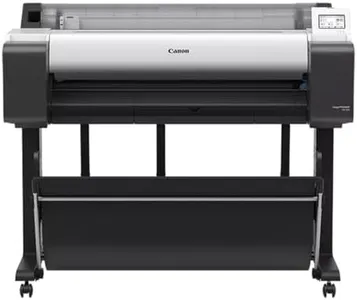10 Best Large Format Printers 2025 in the United States
Our technology thoroughly searches through the online shopping world, reviewing hundreds of sites. We then process and analyze this information, updating in real-time to bring you the latest top-rated products. This way, you always get the best and most current options available.

Our Top Picks
Winner
Canon imagePROGRAF PRO-300 Wireless Color Wide-Format Printer, Prints up to 13"X 19", 3.0" LCD Screen with Profession Print & Layout Software and Mobile Device Printing, Black, One Size
Most important from
403 reviews
The Canon imagePROGRAF PRO-300 is a versatile large-format printer that excels in print quality and ease of use. It supports prints up to 13” x 19”, making it suitable for large photos and fine art prints. The 9-color plus Chroma Optimizer ink system ensures high-quality, vibrant prints, which will appeal to both advanced amateurs and professional photographers.
The printer includes a 3.0” color LCD screen for easy monitoring and adjustments, enhancing user convenience. Additionally, features like the Nozzle Recovery System and Skew Correction contribute to more efficient and hassle-free printing experiences. Its software compatibility, including the Professional Print & Layout software, helps users manage their print workflow effectively.
Connectivity options are robust with Wi-Fi and USB support, and it even allows for mobile device printing, which adds to its convenience. The printer's relatively large size and weight (31.5 pounds) might be a consideration for those with limited space. The initial cost of the printer, combined with the ongoing expense of ink replacement, should also be considered. This printer is particularly well-suited for serious photographers and artists who need reliable, high-quality prints and are willing to invest in a professional-grade device.
Most important from
403 reviews
Canon imagePROGRAF PRO-1100: 17” Professional Wireless Inkjet Photo Printer
Most important from
37 reviews
The Canon imagePROGRAF PRO-1100 is a large-format photo printer designed for professional-quality prints up to 17 inches wide, making it suitable for photographers and artists needing vibrant, detailed images. Its standout feature is the advanced 11-color pigment-based ink system with Chroma Optimizer, which delivers rich colors, excellent gloss, and smooth surfaces without bronzing. The printer offers a high maximum print resolution of 2400 x 1200 dpi, ensuring sharp and clear photo output.
It supports a wide range of media sizes, from small photos up to 17" x 22", including glossy photo papers, adding versatility in print options. Connectivity is straightforward with USB and Wi-Fi, allowing easy connection to your computer or wireless devices. Canon’s professional print and layout software enhances workflow by providing intuitive controls and compatibility with popular photo editing programs like Adobe.
The printer’s speed is about 1 page per minute for both color and monochrome, so it may not be ideal for large volumes quickly. The device is also fairly heavy at 83 pounds, which means it’s best suited for a dedicated workspace rather than frequent moving. Automatic duplex printing is not included, limiting some efficiency if double-sided prints are needed. This printer is focused on delivering high-quality, large photos with precise color and finish.
Most important from
37 reviews
HP DesignJet T650 Large Format 24-inch Plotter Printer, Includes 2-Year Onsite Warranty Support (5HB08T) - New Model
The HP DesignJet T650 is a solid choice for professionals such as architects, engineers, and construction experts who need precise and sharp large-format prints up to 24 inches wide. It offers a high print resolution of 2400 x 1200 dpi, which ensures crisp lines and vivid color, important for technical drawings, posters, and maps. The printer uses pigment and dye-based inks, providing good color quality and durability. It supports various media types, including roll and sheet feeds up to 24 inches wide, and features automatic switching between roll and sheets, plus an automatic horizontal cutter, making it convenient for multi-sized projects.
Print speed is reasonable for its category, with about 26 seconds per A1/D size page and up to 82 such prints per hour, helping to keep workflows efficient. Connectivity options are versatile, including Ethernet, USB 2.0, and Wi-Fi, allowing easy printing from desktops, laptops, and mobile devices via the HP Smart app. The included HP Click software simplifies handling multiple file types and reduces waste with features like PDF error checking and auto-nesting.
The printer comes with a 2-year onsite warranty, which adds peace of mind through fast support and maintenance. While it is relatively heavy (81 pounds) and better suited for office or studio spaces rather than portability, its robust build and features justify this. One limitation is the maximum sheet capacity (50 sheets), which might require frequent refilling in busy environments. Also, while print speeds are decent, they are not the fastest available, so users with extremely high volume demands might consider faster models. The HP DesignJet T650 combines high print quality, flexible media handling, and useful software in a reliable package that fits well for users needing quality large-format technical prints without overly complex operation.
Buying Guide for the Best Large Format Printers
Choosing the right large-format printer can be a daunting task, but with the right approach, you can find a model that perfectly suits your needs. Large-format printers are essential for producing high-quality prints for posters, banners, blueprints, and other large-scale projects. To make an informed decision, you need to consider several key specifications that will impact the performance and suitability of the printer for your specific requirements. Understanding these specs will help you navigate through the options and select the best fit for your needs.FAQ
Most Popular Categories Right Now
